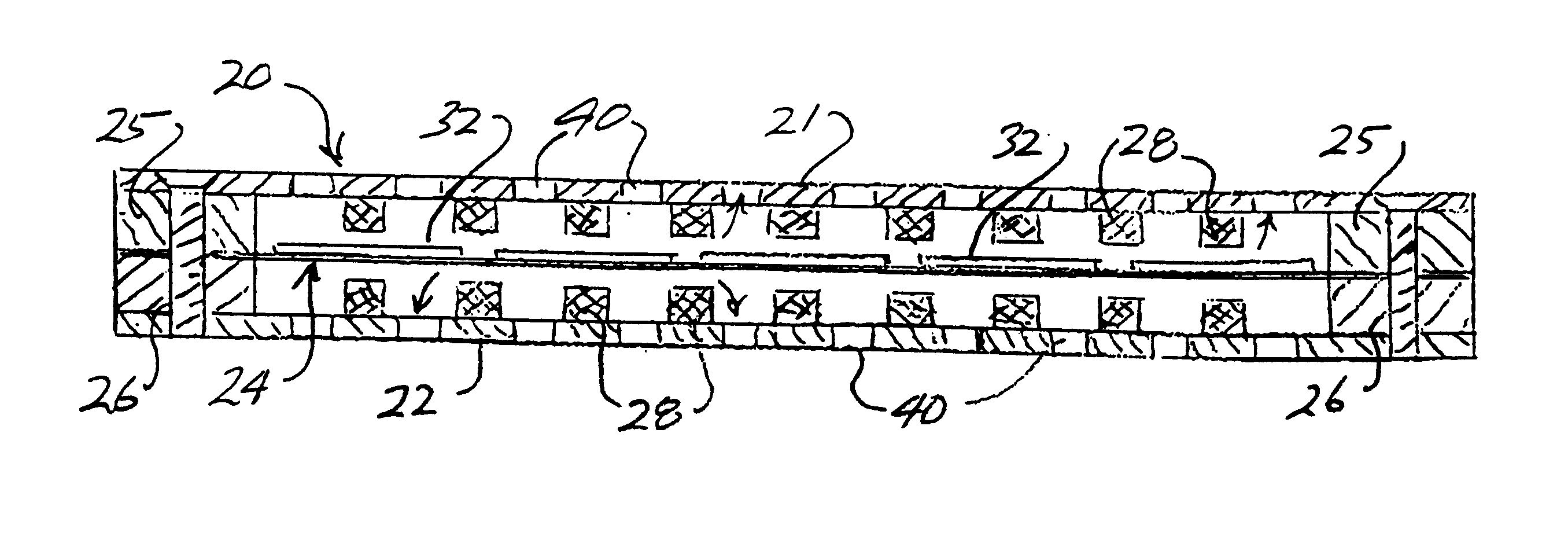Planar diaphragm loudspeakers with non-uniform air resistive loading for low frequency modal control
a plane diaphragm and resistive loading technology, applied in the field of acoustic loudspeakers, can solve the problems of low frequency response, low frequency capability, and low frequency response, and achieve the effects of low frequency capability, high tension, and reduced tension
- Summary
- Abstract
- Description
- Claims
- Application Information
AI Technical Summary
Benefits of technology
Problems solved by technology
Method used
Image
Examples
Embodiment Construction
With continued reference to the drawings, the present invention is directed to loudspeakers and especially woofers incorporating flat diaphragm type transducers. The invention will be disclosed with respect to planar magnetic type transducers, however, it is not limited specifically thereto and would apply to other types of flat diaphragm transducers and loudspeakers incorporating such transducers.
With specific reference to FIGS. 4-9, a first embodiment of the invention is disclosed. The transducer 20 includes a stator housing having an upper stator plate 21 and lower stator plate 22 which are preferably formed of a mild magnetic steel material and which are joined around their peripheral portions by suitable fasteners such as screws or rivets 23. As shown, a flexible resonance diaphragm 24 is mounted with the stator housing. The diaphragm may be formed of a polyester film such as Mylar.TM. or Kapton.TM. or may be formed of various vinyl chlorides such as Saran.TM.. Typically, such ...
PUM
 Login to View More
Login to View More Abstract
Description
Claims
Application Information
 Login to View More
Login to View More - R&D
- Intellectual Property
- Life Sciences
- Materials
- Tech Scout
- Unparalleled Data Quality
- Higher Quality Content
- 60% Fewer Hallucinations
Browse by: Latest US Patents, China's latest patents, Technical Efficacy Thesaurus, Application Domain, Technology Topic, Popular Technical Reports.
© 2025 PatSnap. All rights reserved.Legal|Privacy policy|Modern Slavery Act Transparency Statement|Sitemap|About US| Contact US: help@patsnap.com



